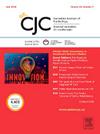Definition, Classification, and Management of Primary Noncardiac Causes of Cardiogenic Shock
IF 5.8
2区 医学
Q1 CARDIAC & CARDIOVASCULAR SYSTEMS
引用次数: 0
Abstract
Cardiogenic shock (CS) is a complex syndrome, presenting with a critical state of cardiac output insufficient to support end-organ perfusion requirements. Contemporary CS classification recognizes broad categories of primary cardiac etiologies of CS, such as acute myocardial infarction and heart failure. Primary noncardiac etiologies of CS, however, are poorly described in literature and have not been captured by any contemporary classification, leading to challenges in diagnosing and managing these cases.
In this review, we propose that primary noncardiac causes of CS be recognized as its own category that builds on the original Shock Academic Research Consortium classification with its own additional modifiers. We present a detailed framework that groups each noncardiac cause by its underlying disease mechanism (vascular, infectious, inflammatory, traumatic, toxic, cancer related, endocrine, metabolic) and review available literature on their respective management strategies. We expect that the ability to classify primary noncardiac causes of CS will help with early identification and targeted management of the primary noncardiac insult, support patients through their shock state, and may lead to improvement of in-hospital CS mortality rates in clinical practice. Moreover, this new framework can further assist clinical trial classifications to properly phenotype CS for clinical research purposes.
原发性非心源性休克的定义、分类和处理。
心源性休克是一种复杂的综合征,表现为心输出量不足以支持终末器官灌注需求的临界状态。当代心源性休克分类承认心源性休克的主要心脏病因的广泛类别,如急性心肌梗死和心力衰竭。然而,心源性休克的主要非心脏病因在文献中描述很少,也没有被任何当代分类所捕获,这导致了诊断和管理这些病例的挑战。在这篇综述中,我们建议将心源性休克的主要非心脏原因作为一个单独的类别,该类别建立在最初的休克学术研究联盟分类的基础上,并附带附加的修饰词。我们提出了一个详细的框架,根据其潜在的疾病机制(血管、感染性、炎症性、创伤性、毒性、癌症相关、内分泌、代谢)对每种非心脏原因进行分组,并回顾了有关其各自管理策略的现有文献。我们期望对心源性休克的原发性非心源性原因进行分类的能力将有助于早期识别和有针对性地处理原发性非心源性损伤,支持患者度过休克状态,并可能导致临床实践中院内心源性休克死亡率的提高。此外,这一新的框架可以进一步帮助临床试验分类,为临床研究目的正确地分型心源性休克。
本文章由计算机程序翻译,如有差异,请以英文原文为准。
求助全文
约1分钟内获得全文
求助全文
来源期刊

Canadian Journal of Cardiology
医学-心血管系统
CiteScore
9.20
自引率
8.10%
发文量
546
审稿时长
32 days
期刊介绍:
The Canadian Journal of Cardiology (CJC) is the official journal of the Canadian Cardiovascular Society (CCS). The CJC is a vehicle for the international dissemination of new knowledge in cardiology and cardiovascular science, particularly serving as the major venue for Canadian cardiovascular medicine.
 求助内容:
求助内容: 应助结果提醒方式:
应助结果提醒方式:


